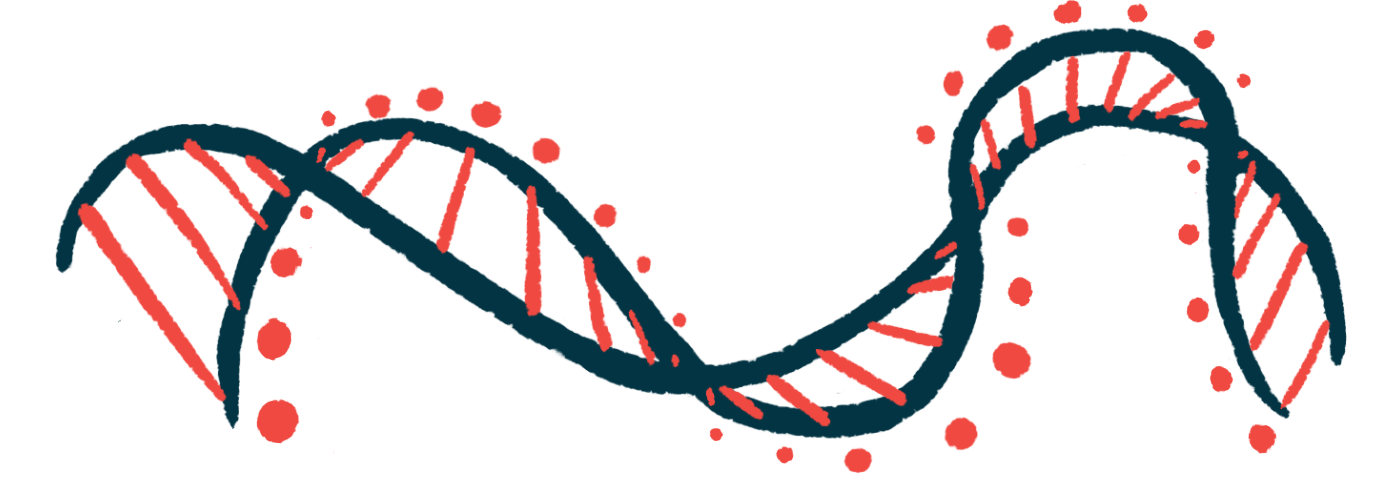Elevidys, one year later: ‘It’s no longer just about coping with DMD’
Hiram Secrist was first Duchenne MD patient to receive the gene therapy

A little over a year ago, neurologist Sarah Wright administered Elevidys (delandistrogene moxeparvovec-rokl) to then 5-year-old Hiram Secrist, making him the first Duchenne muscular dystrophy (DMD) patient to receive the gene therapy outside of a clinical trial.
Elevidys became the first and only gene therapy available for DMD patients after the U.S. Food and Drug Administration (FDA) conditionally cleared it in June 2023 for boys, ages 4-5, who were still able to walk. Hiram Secrist and other eligible boys were dosed just a few weeks later.
The boy’s mother, Kristen Secrist, said being part of the historic moment “feels amazing.”
“It represents years of hard work, research, and hope for everyone affected by DMD,” Secrist said in a written Q&A with Muscular Dystrophy News Today. “For our family, it’s a breakthrough in medical care, bringing new hope and a better quality of life.”
Wright, a neuromuscular neurologist at Children’s National Hospital in Washington D.C., sees the moment as similarly monumental.
“It was historic for me to be a part of such a dedicated team of providers … putting patient care first,” said Wright, who noted the Children’s National team was just “one of many … working at record pace,” to make sure the gene therapy could be quickly accessed after its approval.
How does Elevidys work in DMD?
Developed by Sarepta Therapeutics, Elevidys is designed to deliver a gene that encodes the production of a shorter than normal, but still functional, dystrophin protein. A lack of dystrophin due to mutations in the DMD gene is what drives progressive muscle damage and other DMD symptoms. Packaged into a viral carrier and delivered via a one-time infusion, the therapy is intended to protect muscles and preserve motor function.
The Secrist family learned Hiram was eligible for Elevidys by mid-July 2023, just weeks after its approval. It wasn’t a difficult decision for the Virginia family to opt for the gene therapy, even though they were concerned about getting insurance coverage for the expensive treatment, Secrist said. They were also on a time crunch; Hiram would turn 6 on Aug. 3, at which point he would have aged out of being eligible for the treatment.
“By some miracle, they approved it immediately,” Secrist said. Hiram was dosed on Aug. 2, a day before his birthday.
Families now looking to access Elevidys may not have to race against the clock the way the Secrists did. Earlier this summer, the FDA expanded Elevidys’ approval to include all DMD patients, ages 4 and older, regardless of their ability to walk.
Secrist calls the expanded approval a “monumental step forward in our collective fight to end DMD.”
Seeing improvements
The earliest Elevidys-treated patients, like Hiram, have now had about a year to start seeing improvements.
The therapy is able to enter its target cells quickly, within a matter of weeks, so many patients are able to see benefits fairly early, Wright said. While high doses of steroids used around the time of the procedure might contribute to some early benefits, sustained motor function improvements are likely the result of the therapy itself.
“Boys like Hiram are now able to jump, more easily climb stairs, and even do things like learn to ride a bike for the first time,” Wright said.
Secrist said Hiram’s “transformation has been remarkable.” Before Elevidys, he was only treated with steroids, which can help reduce inflammation to ease symptoms, but don’t address the underlying cause of the disease.
Since receiving the therapy, Hiram, who is now 7, has started to see better endurance and can keep up with his peers. He also has new physical skills “that were once out of reach,” such as being able to jump or climb stairs with alternating feet, his mother said.
“Teachers at his school, along with close friends and family who are familiar with our situation, have all noticed the difference,” Secrist said. “They’ve remarked on how much he’s changed over the past year.”
Hiram handled the procedure well and hasn’t seen any side effects. The biggest challenge was dealing with the many blood draws and lab tests that came afterward, which are used to monitor liver health after gene therapy. “I lost count after his 20th blood draw in just three months,” Secrist said.
It isn’t yet known how Elevidys might help older patients who’ve lost the ability to walk, but Wright is optimistic the gene therapy “will [universally] help slow the natural progression of disease,” in addition to offering some protection for the heart.
Balancing ‘hope with realistic expectations’
The therapy’s clearance for nonambulatory patients is still conditional, meaning the FDA wants more clinical trial data before granting its full approval. Ongoing Phase 3 studies are expected to support that, including the ENVISION trial (NCT05881408) that may still be recruiting DMD patients of different ages and walking abilities at sites in the U.K., Australia, Europe, and Japan.
For families considering Elevidys, both Wright and Secrist emphasized that genetic therapy is not a cure for DMD, but it can slow the disease’s progression, delay the loss of walking abilities, and improve a patient’s quality of life.
“It’s crucial to balance hope with realistic expectations,” Secrist said.
It’s also critical to work closely with a clinical care team to discuss the potential risks and benefits of Elevidys, Wright noted.
“Families should know that they are not alone in making this decision,” Wright said. “The clinical team at their center is there to support them every step of the way, and there are many organizations, such as Parent Project Muscular Dystrophy, with excellent information to aid families in learning about gene therapy.”
Both see Elevidys’ approval as a gateway toward a brighter future for DMD patients.
Elevidys itself not only offers new opportunities, but the commercial approval of one gene therapy “drives research to further improve the delivery, efficacy and safety,” of gene therapies in the future, Wright said. “I am hopeful that the future of gene therapy for DMD includes durable and efficacious therapies for boys of all ages.”
Secrist now sees a different future for Hiram. “While we know there are still challenges ahead, Elevidys has expanded the possibilities for Hiram’s future. It’s no longer just about coping with DMD, but about embracing the potential for a better quality of life.”
The family has learned through their journey that hope and resilience are key for realizing the best possible future for Hiram.
“There’s a lot of power in staying hopeful, even in the face of uncertainty, and we’re grateful for the opportunities that therapies like Elevidys have brought into our lives,” Secrist said.








